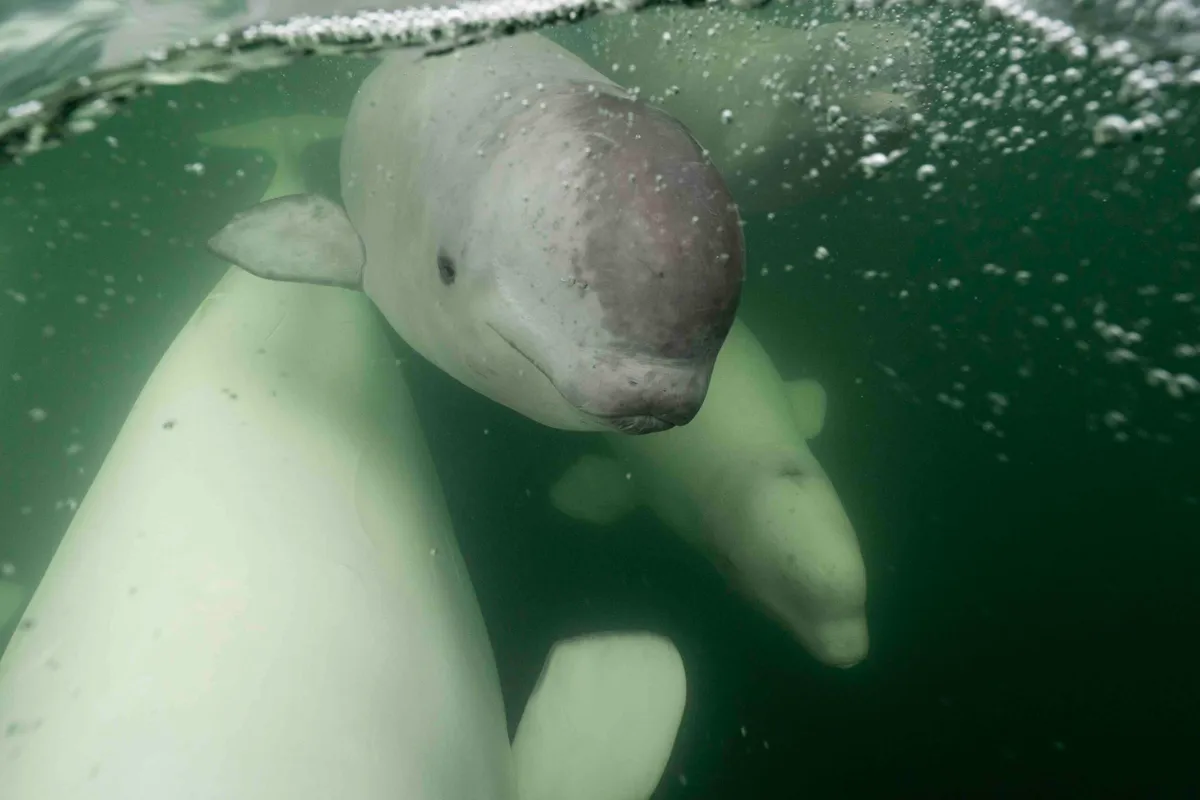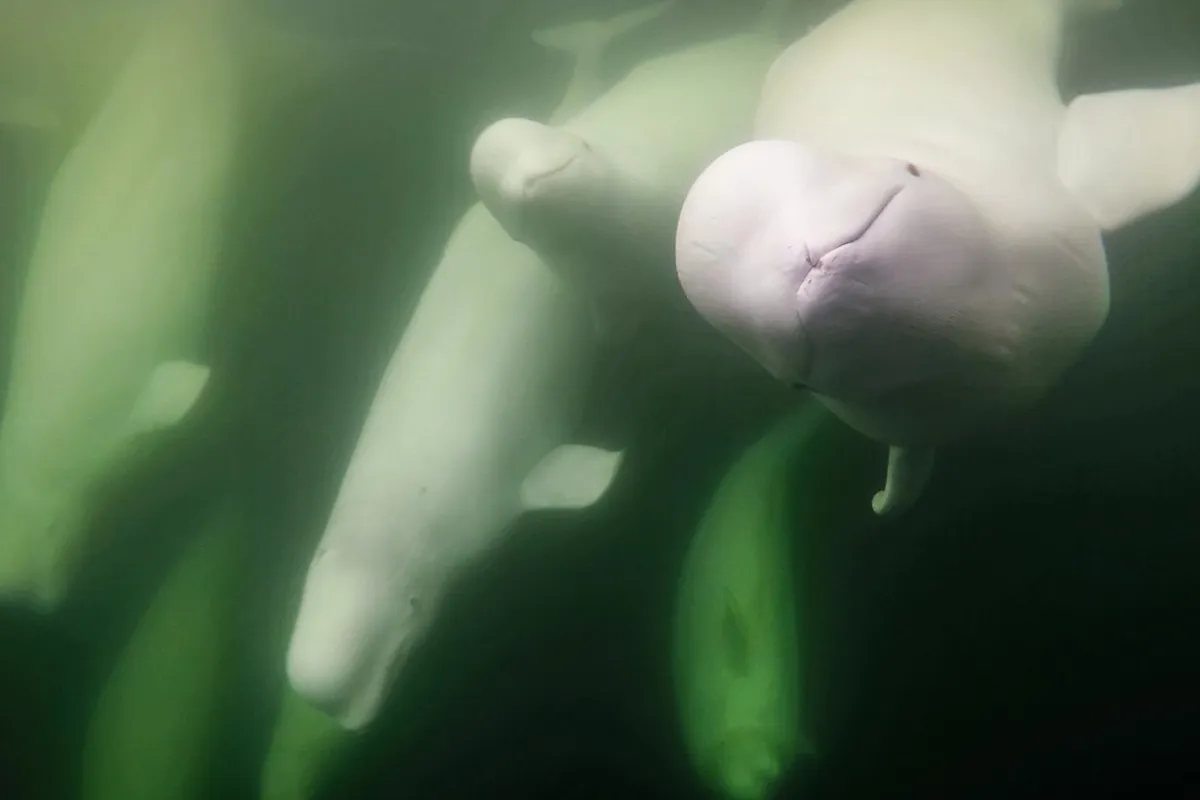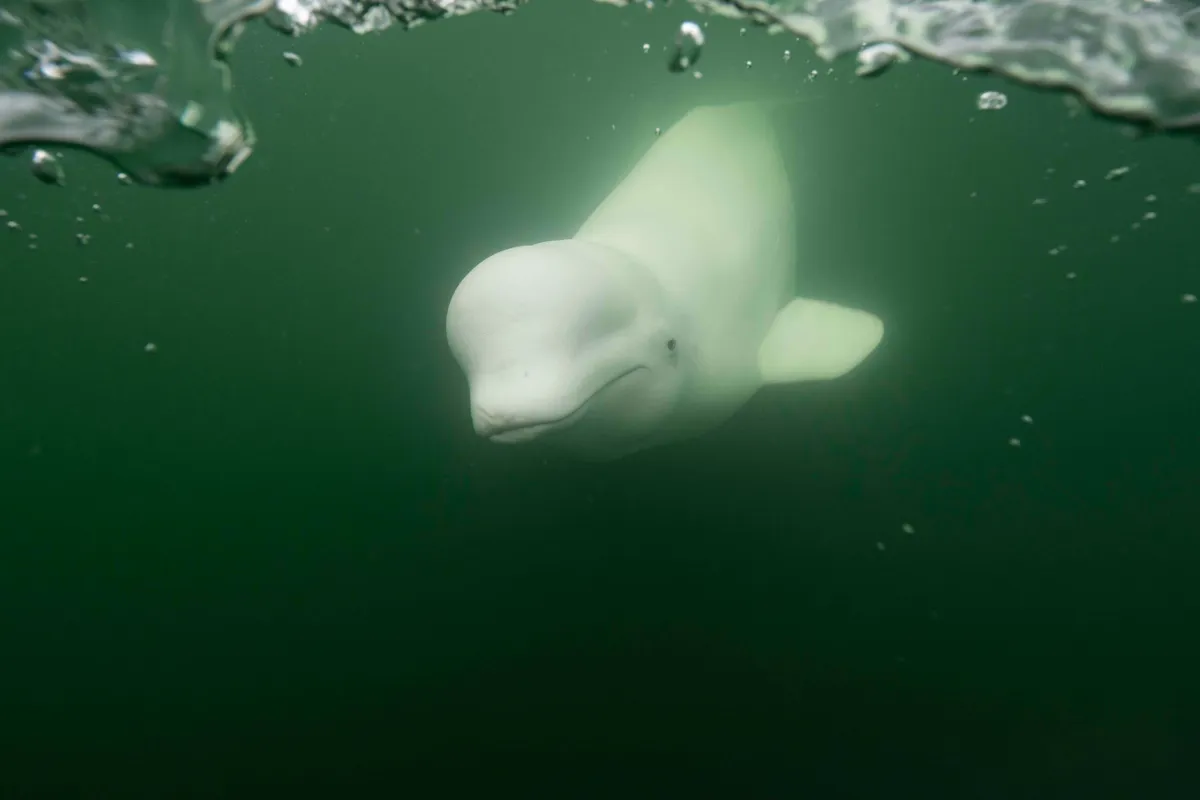About 60,000 beluga whales make the annual migration from the Arctic to the warm waters of the Churchill River estuary in Hudson Bay to feed, tube and give birth.
This year, on Arctic Sea Ice Day (July 15), Polar Bears International will re-air their Beluga Whale Live Cam so wildlife lovers can watch these playful, gentle giants of the sea in action.
Beluga Underwater Cam viewers will see dozens of beluga whales playing, swimming, nursing and feeding their calves.
Beluga Cam
The Churchill River estuary is inaccessible during the winter months, but after the thaw, 57,000 belugas travel upriver in Manitoba to sub-Arctic Southern Hudson Bay, where beluga whales feed in relative safety. because there are less predators like orcas around them.

“Beluga whales are very curious, and many swim up to the underwater camera while playing behind the boat,” says Alisa McCall, Polar Bear International Research Officer and Director of Conservation Outreach.
“One of our favorite aspects of the Beluga Cam experience is the hydrophone, which allows people to hear the whales vocalizing and communicating with each other. They are called “canaries of the sea”: constant communication. The underwater camera also allows viewers to put the belugas in context on the banks and surrounding areas, as pods of whales circle the river.”
There is also a chance to see other local wildlife. “Underwater viewers can see a variety of fish like capelin and even jellyfish,” says McCall.
“Thanks to these cameras, the researchers were able to identify the melon comb jellyfish (Beroe cucumber) and the common northern scallop jellyfish (Bolinopsis infundibulum) on the Churchill River. Spectators may even spot a seal if they’re lucky, and there’s a good chance of spotting a polar bear on the beach. As the sea ice melts in the summer months, the bears are forced to hang out on the shore until the ice refreezes. Occasionally, a bear may try its hand or plate at beluga hunting, though rarely with success. Over the years, we’ve learned that Churchill’s wildlife cameras are always full of surprises.”
Belugas rely on sea ice to feed and protect themselves from predators. The Arctic is warming almost four times faster than the rest of the planet. Recent studies have linked the loss of sea ice in Hudson Bay to polar bear survival.
“A better understanding of beluga whales in this region can contribute to a better understanding of what’s happening in Hudson Bay and the Arctic as our world warms,” says McCall.
“Understanding the demography of beluga whales and how they change over time may be one piece of the puzzle of Hudson Bay’s changing ecology. Also, by seeing species we didn’t know existed in the area, such as the northern scallop jellyfish, we can gain insight into changing water conditions and overall ecosystem health.
“Monitoring this area is more important than ever because recent studies suggest that polar bears in the Southern and Western Hudson Bay, including Churchill’s polar bears, may face local extinction if nations fail to meet targets set in the Paris Climate Agreement. Of course, this has far-reaching effects on all species in Hudson Bay and the Arctic, including beluga whales.

Beluga Bits
Viewers can also participate through a citizen science project called Beluga Bits. Assiniboine Park Zoo (APZ) researchers partnered with PBI and Explore.org to study underwater camera images to better understand the underwater world of belugas.
“Beluga Bits involves photographing whales and notifying researchers of interesting finds,” McCall explains.
“Now we receive hundreds of thousands of images every year, but with machine learning and support from the University of Manitoba, this project uses an algorithm that can quickly sort through images and eliminate images that don’t contain whales. This allows Beluga Bits participants to spend more time classifying whales and answering questions.

Since Beluga Bits launched in 2016, over 28,800 community members have engaged with Zooniverse, logging nearly 20,000 volunteer hours and contributing over 7.5 million photo classifications.
“Underwater footage can provide a lot of information about belugas in the Churchill River estuary,” says McCall. “This project will not only help us better understand beluga whales, but also offer unique insights into their rich underwater habitat.”
Check out Beluga Cams now.
More about whales
#Beluga #Cam #beluga #whales #move #watch #epic #journey #live